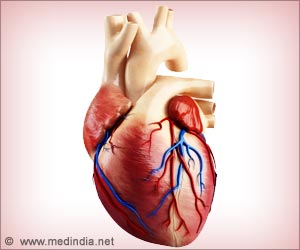Highlights:
- A small device called pacemaker can be implanted into the patient’s heart to control abnormal heart rhythms.//
- Scientists have discovered a battery-less pacemaker that can be placed directly in the patient’s heart.
- The newly designed pacemaker can also use energy wirelessly from radio frequency radiation.
The wireless power transmitter can be placed at up to few centimeters away. Pacemakers work by using the electrical signals that could prompt the heart to keep a steady beat.
However, they are not traditionally placed inside the heart, but located away from the heart and surgeons could also periodically replace their batteries with minor surgery.
The electrical signals are transmitted to the heart through wires called “leads.” Complications related to these leads could result in some problems like bleeding and infection.
The prototype wireless pacemaker could reduce the risks by doing away with the leads.
Babakhani said, in contrast said, battery-less, lead-less and wirelessly powered microchips could be implanted directly to place multiple points inside or outside the heart.
How does the Pacemaker Work?
The chip placed at the system’s heart could be less than 4 millimeters wide and would incorporate to the receiving antenna, there is an AC-to-DC rectifier, a power management unit and also a pacing activation signal.
The capacitor and a switch could also join the chip on a circuit board which could be smaller than a dime. The chip can receive power using microwaves in the 8 to 10 gigahertz electromagnetic frequency spectrum.
The frequency of the pacing signals that can be produced by the pacemaker could be adjusted by either increasing or decreasing the power that is transmitted to the receiving antenna which can be stored until it reaches a predetermined threshold.
During this point, they could release the electrical charge to the heart and begins to fill again.
The device was successfully tested in a pig and also demonstrated that it could tune the heart rate of the animal from 100 to 172 beats per minute.
Further, a short paper describing the device will be released at the conference. And the team could be further developing its technology in collaboration with Texas Medical Center Institutions and well as the University of California at San Diego.
Heart Pacemaker
It is a device that is battery-operated. The device is capable of sensing when the heart could beat irregularly or slowly. They can be placed either temporarily or permanently depending on the condition.
It usually weighs less than one ounce and consists of two parts:
- Generator - It contains the battery and information to control the heart beat
- Leads - Wires that could connect the heart to the generator and carry the electrical messages to the heart
- Heart pacemaker - (https://medlineplus.gov/ency/article/007369.htm )
Source-Medindia












